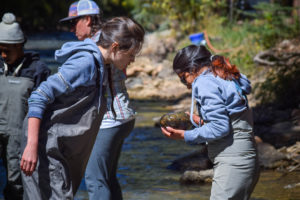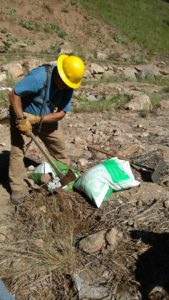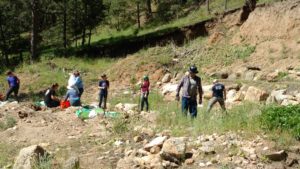Colorado TU is seeking an energetic, reliable self-starter with strong communications and social skills to facilitate and improve our internal and external communications and to help manage our membership programs. This full-time position includes lead responsibility for managing our digital communications programs (e-mail, website, social media), as well as managing our integrated membership database and working with other CTU staff and volunteers to develop and implement programs to improve membership recruitment and retention. The position will be based out of the state office in Denver. The position work plan includes:
Website management. Manage www.coloradotu.org website, collect and post content from other TU staff and volunteers as well as generating original, timely content. Includes regular blog article posting, managing online “Action Center” for advocacy, and web calendar. Coordinate structural updates to the site with contracted programmers.
E-communications. Coordinate and produce monthly e-mail newsletters “Currents” (to all supporters) and Chapter Leaders Email (to ~200 chapter leaders statewide). Prepare and send other discrete emails to various parts of our mailing list such as event announcements, raffle ticket sales, and important “breaking news” messages. Prepare one or more articles for each quarterly edition of High Country Angler online magazine.
Social media. Manage content for CTU’s social media presence, ensuring regular postings with Facebook and developing strategies for enhanced use of Twitter, Instagram, and possibly other platforms.
External communications. Coordinate with National TU communications staff to deliver CTU information to external audiences through press releases and placement of articles with local media outlets, development of content for distribution through partners (such as fly fishing retailers), and other new tactics for communicating TU messages to the broader public.
Membership services & database management. Maintain CTU member/donor database in integrated SALSA platform. Handle basic correspondence such as electronic “new member welcome” package and hard-copy small donor thanks. Respond to general membership inquiries.
Liaison with National TU communications staff. Coordinate CTU communications (both internal and external) with National Trout Unlimited staff in Colorado including the Southwest Region Communications Director. Help promote CTU and Chapter stories in national TU media outlets where appropriate.
Other duties. Participate in core CTU events such as the Annual River Stewardship Gala and the Rendezvous. Supervise unpaid communications intern when present (through program for students to obtain academic credit). Other miscellaneous duties as assigned.
Qualifications: Strong written and oral communication and interpersonal skills. Previous experience or demonstrated ability in communications, media relations, and/or website management. Dedicated commitment to conservation. Ability to work weekend and evening hours when needed. Solid computer and social media related skills, including database management and basic web design. Specific experience with SALSA database and Wordpress website platforms is helpful but not required. Demonstrated creativity and initiative strongly desired. Background knowledge of water resource and fishery issues helpful, but not required.
Salary Range: Salary in low to mid $30Ks plus excellent health benefits and potential for annual performance bonus.
To apply, please email cover letter and resume by October 6 to: David Nickum, Executive Director, Colorado Trout Unlimited, at dnickum@tu.org. No phone calls please.






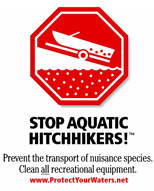 These species can cause considerable damage to water infrastructure, lakes, rivers, and wildlife.
As anglers, it is important for us to recognize that the “Clean, Drain, and Dry” slogan doesn’t just apply to speedboats and Skidoos. We spend considerable time in and near bodies of water in this state, and that means we need to be very careful how we clean and dry our own equipment. Fortunately, every time we head to the river or sit in the blind, we don’t have to wait in line to get cleared by a CPW inspector, or carry around white tags that confirm our wading boots are clean. But with this freedom comes great responsibility.
These species can cause considerable damage to water infrastructure, lakes, rivers, and wildlife.
As anglers, it is important for us to recognize that the “Clean, Drain, and Dry” slogan doesn’t just apply to speedboats and Skidoos. We spend considerable time in and near bodies of water in this state, and that means we need to be very careful how we clean and dry our own equipment. Fortunately, every time we head to the river or sit in the blind, we don’t have to wait in line to get cleared by a CPW inspector, or carry around white tags that confirm our wading boots are clean. But with this freedom comes great responsibility.
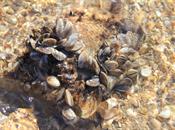

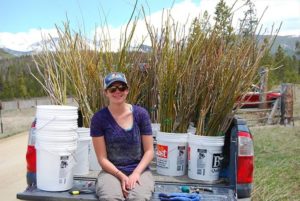 What is your favorite activity or project that you have done with TU?
What is your favorite activity or project that you have done with TU?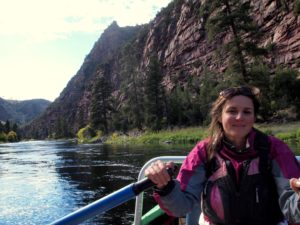
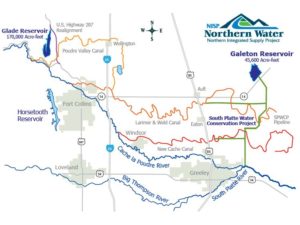 The
The 
